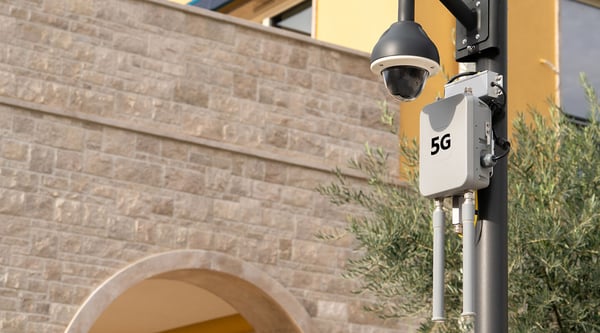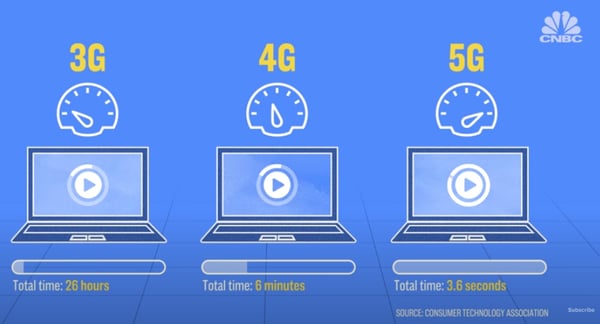The 4 Most Innovative Wireless Solutions for 2020

With remote work becoming a necessity in 2020, it’s more important now than ever before to empower your workforce with the latest tech that allows them to work from anywhere with ease.
Wireless solutions are varied, and for users who aren’t tech-savvy, knowing what solution is right for your business isn’t easy to figure out.
You may have heard or read all the technical lingo and insider jargon, but then you need to translate it all before you can even begin to understand how it works. And, unless you have an IT person who can explain it in layman’s terms, I encounter many who simply pick the cheapest company out of frustration and a lack of time to do more research.
At Atlantech Online, our experts understand how important it is for you to choose a wireless solution that can meet your business's needs. That’s why our experts compiled this list of the most innovative solutions — with videos — to help explain the tech so that you burn fewer mental calories.
Keep reading to learn more about the four wireless solutions your company can leverage in 2020 and how to find the right one to suit your needs.
4 Wireless Solutions to Keep Your Company Mobile in 2020
Wireless solutions in 2020 are much more advanced than we’ve ever seen before. The latest tech revolutionizes the internet and the types of devices we can connect to a wireless network.
We’ll take a look at the top 4 business wireless solutions you need to know about as you consider investing in the technology you need as remote work becomes necessary.
1. 5G

5G is a new mobile network that’ll replace 4G (also known as LTE) and revolutionize the internet in the years to come. 5G uses frequency in the 25 - 39 GHz band, which is near the bottom of the millimeter wave band. Think back to your old FM listening days to remind yourselves of what a radio band and frequency actually is. I listened to 97.9 FM in Baltimore when I was younger. FM was a radio band that typically used frequencies between 87.5 to 108.0 MHz. Tune your FM radio to 97.9 and you'd be enjoying 98 Rock! Because of the band and frequency that 5G operates, the bandwidth capacity is 100x greater than 4G, making download speeds much faster. However, it's range is much shorter. You couldn't listen to 98 Rock outside the Baltimore metro area. But, I remember being in Miami, Florida and listening to 1500 AM, a news station in Washington, DC. Different band and a different frequency. 5G has a much shorter range, but much higher potential throughput.
For example, let’s say you want to watch a 2-hour video. Downloading a video that size takes approximately:
- 26 hours on 3G
- 66 minutes on 4G
- And only 3.6 seconds on 5G
As you can see from this example, 5G has the fastest download times currently available. 3.6 seconds is a significant improvement over the 66 minutes it takes on a 4G network.

5G isn’t only limited to smartphones. Any device that’s enabled with 5G can connect to the 5G network. That means farmers can have irrigation systems connected to 5G, or cities can install electronic street signs with 5G connectivity.
The possibilities of 5G are endless. Jay Ellison, Executive VP and Chief Operating Officer for U.S. Cellular, shared some predictions for how he thinks 5G is going to change the internet forever. Here’s a summary of his predictions:
- Cities will leverage 5G and IoT technology to improve transportation, traffic congestion, or track foot traffic in downtown areas to lure businesses and create jobs
- Smartphones will have much faster speeds
- High-speed, fixed wireless solutions will be offered in homes
- AR games and virtual assistants will be enhanced
- Security companies specializing in 5G networks will start to appear
2. eSim
The days of traditional SIM cards you have to insert and remove via a slot in your phone are quickly coming to an end. eSIMs are SIM cards embedded in your phone, and they’re numerous benefits that make them superior.
Manufacturers won’t be creating so much waste by producing 6.5 billion plastic SIM cards every year, and your phone will be more waterproof when SIM card slots aren’t built into them anymore.
When using a phone that has eSIM functionality, switching between carriers becomes a breeze. You won’t need to visit a physical retail location to insert a new SIM card into your phone. Switching carriers is as easy as unlocking your phone or downloading an app.
According to Joe Dryer, Director of Strategy & Insight at projekt202, eSIM technology enables us to:
- Make switching between carriers fast and hassle-free
- Connect more devices, such as watches, rings, or laptops without needing to connect through Bluetooth or a mobile hotspot on your phone
- Devices could get smaller because eSIMs take up much less room than their physical SIM counterparts
- Traveling is safer because you don’t have to connect to random Wifi networks and you can use your secured mobile connection instead
- You can connect to multiple networks
- It’s easier for your IT team to manage
3. Dual Sim
eSIM is a new technology, so most phones in the hands of consumers might not have the functionality yet. The latest phones on the market aren’t all eSIM exclusive, meaning they have dual SIM capabilities.
Not only do they include a SIM slot for physical cards, but they also have an eSIM embedded inside. This allows users to get the best of both worlds while companies take the next few years to make the changes necessary to adopt this new technology worldwide.
With dual SIM functionality, you can use multiple phone numbers on the same device and switch between them seamlessly when taking calls and texting both numbers simultaneously.
Phones that are currently equipped with eSIM functionality include:
- iPhone XS, XS Max, XR, 11, 11 Pro, and 11 Max
- Google Pixel 2, 3, 3A, and 4
- Samsung Galaxy Fold, S20, S20 Plus, S20 Ultra, and the Galaxy Z Flip
- Motorola Razr (the 1st phone to have eSIM exclusively )
4. Private LTE
Traditional LANs are limited. You can’t cost-effectively upscale them, making it harder and more costly to grow your business.
WANs aren’t much better. Downscaling is operationally impossible with a WAN network. No matter which type of network you use, LAN or WAN, networking in distribution centers, airports, or even cities is challenging.
That’s where private LTE networks come in.
Private LTE networks are built on-site and are cloud-based. They can be operated by big-name mobile carriers, or by third-party providers. These types of networks combine the control and fixed cost you enjoy from a private network with the security, flexibility, and macro-network benefits LTE offers.
The global private LTE networks and 5G markets are expected to grow approximately $10 billion by 2025. Industries expected to see the biggest growth in private LTE and 5G adoption rates are:
- Manufacturing
- Mining
- Oil & Gas
- Transportation
- Government Entities
Finding the Right Wireless Solution for You
Finding the right wireless solution for your business doesn’t have to be a hassle. With the right provider, you’ll get the advice you need to ensure your wireless needs are met.
At Atlantech, we’re more than just a wireless provider. We offer our clients an all-in-one mobile communications service with UCaaS and CCaaS capabilities.
You’ll be able to leverage the power of the most innovative wireless solutions available in 2020. As a bonus, you’ll have a team of experts to help you set everything up.
“As a Federal IT service provider, we contracted our Internal Internet Connectivity and telephone services to Atlantech Online. They provided a smooth transition from our previous internet/phone provider, and the quality of their performance has consistently met and exceeded our expectations.” - Rodney G. Hawkins, President of Washington Technology Group, Inc.
What are you waiting for? Get the wireless services you need from a provider you can trust.


